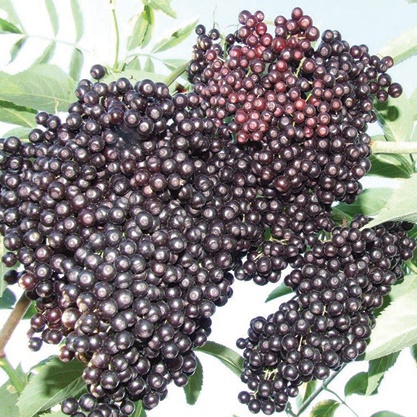Subtotal: $19.95
Elderberry : HASCHBERG 2 year old plant
$26.95
(Sambucus nigra) The leading commercial variety in Germany and Austria, Haschberg effectively combines the flavour and medicinal qualities of the wild European black elder with larger fruit and high production. Large clusters of deep blue-black berries grow on vigorous bushes which can reach 3m (10') or so at maturity. Creamy, white flowers have anti-inflammatory properties and can be battered or fried and eaten as a vegetable.
Potted Plant
SEMI-FERTILE* | ZONE 4/5 | HARVEST: SEPT
ONE OF TOP PICKS FROM EUROPE
Only logged in customers who have purchased this product may leave a review.
Growing Tips
S. canadensis (North American) elder plants grow fruit on new, first year's growth, as well as on older wood. Some commercial growers cut them down to the ground every fall for quick, easy pruning. This should not be done on S. nigra (European) varieties, including Marge, as these bear their fruit on the second year's growth of wood. However, all elders can also be pruned by just removing some of the oldest branches every year after the plants are mature.
 Elderberry : BOB GORDON 2 year old plant reg $27.95
Elderberry : BOB GORDON 2 year old plant reg $27.95 




Reviews
There are no reviews yet.